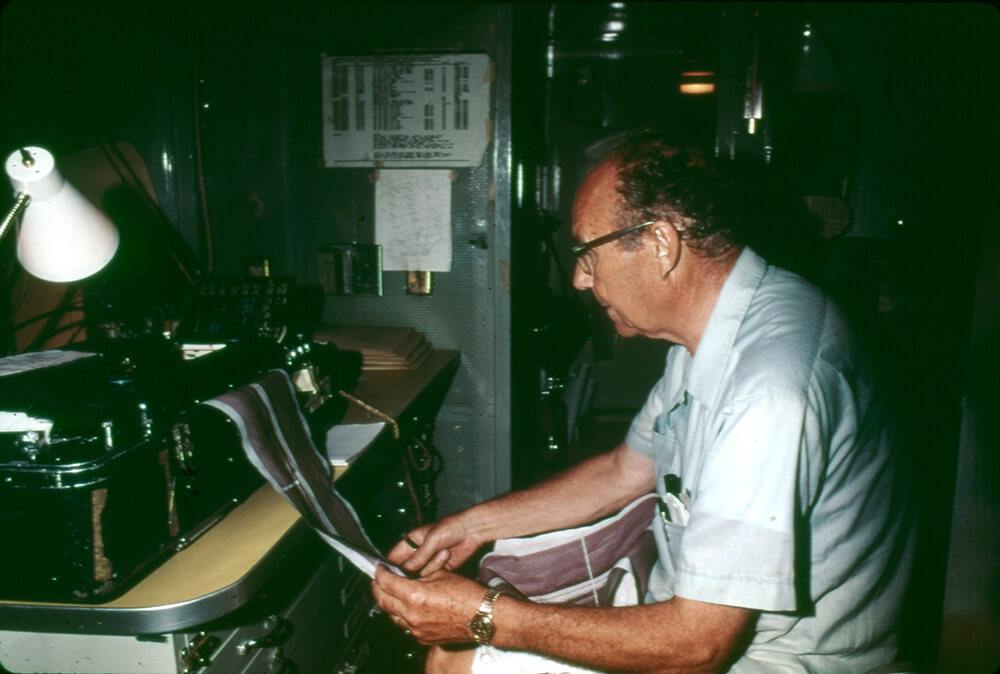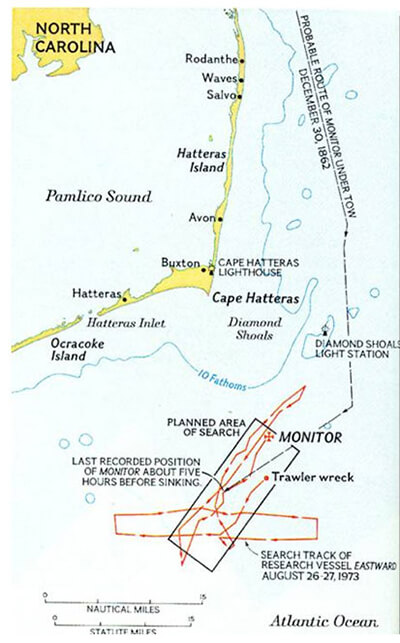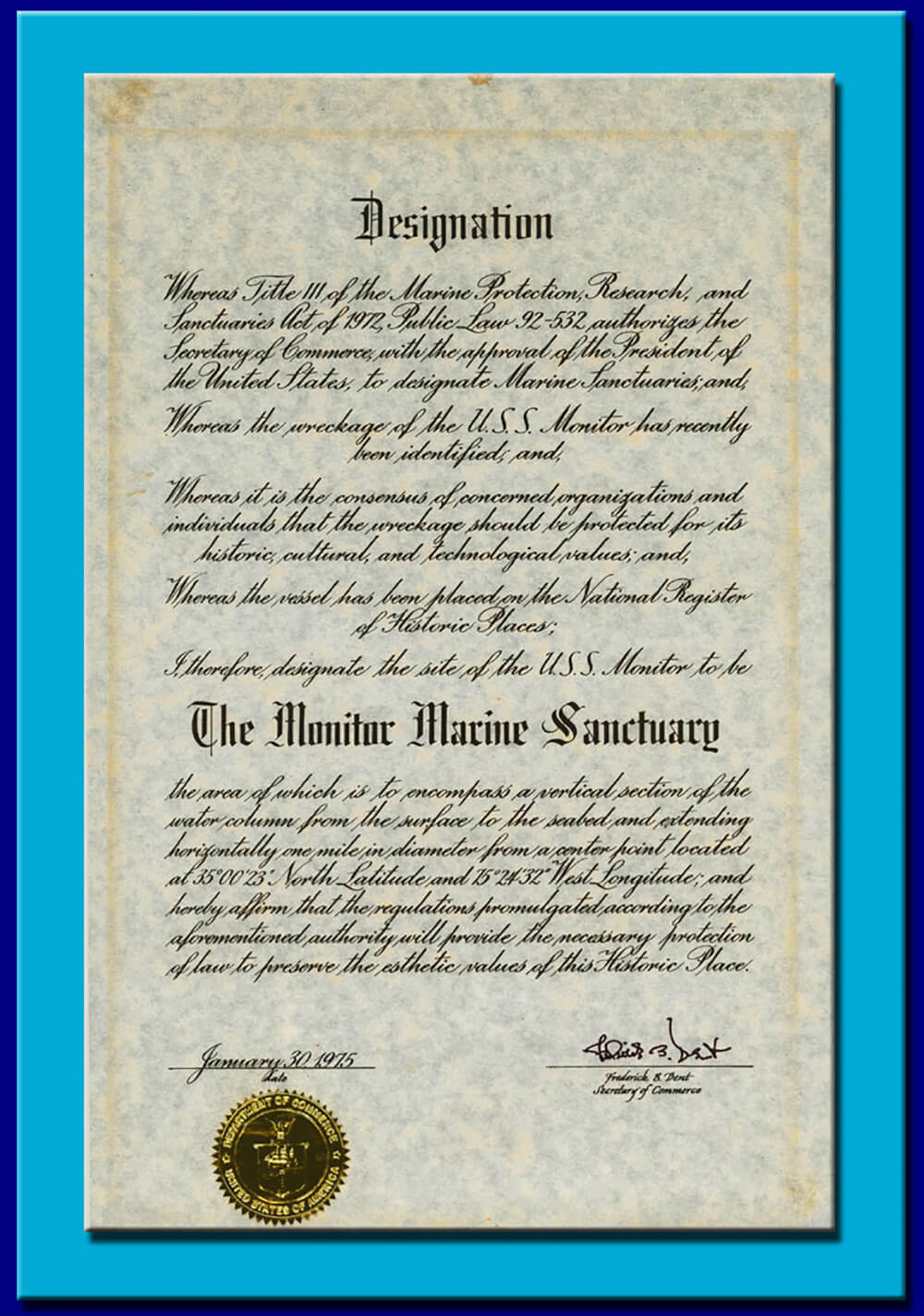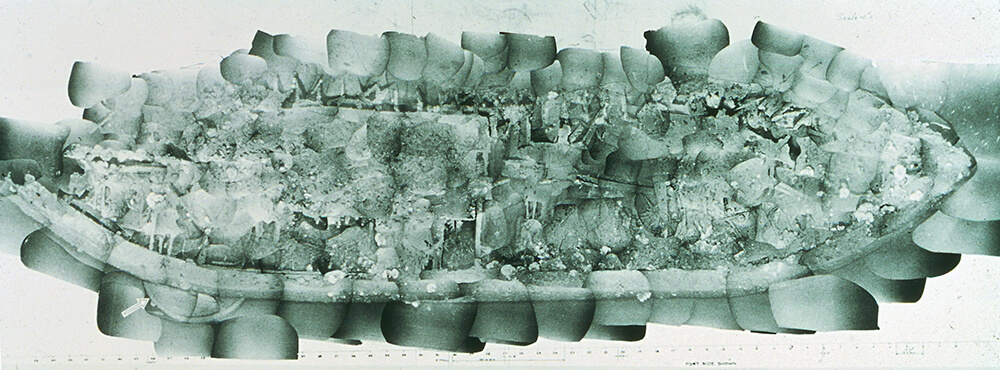Discovery and Designation
Discovery
After Monitor sank beneath the waves on New Year’s Eve 1862, the ship and 16 of its sailors were lost to history. But in 1973, an effort began to find the historic vessel.
From August 17 through 31, 1973, a scientific team on board the Duke University Marine Laboratory research vessel Eastward conducted an oceanographic expedition off North Carolina with two objectives: first, a geological study of the continental shelf off Cape Hatteras, and second, a search for Monitor.


On August 27, researchers discovered a target they believed could be Monitor. After painstakingly imaging the site, the scientists observed what they believed to be Monitor's uniquely-shaped hull lying approximately 16 miles south-southeast of the Cape Hatteras Lighthouse in about 230 feet of water. On March 7, 1974, after months of reviewing the video and photos, it was finally announced that the USS Monitor's wreck site had been found.
In April 1974, the U.S. Navy's Seaprobe team agreed to assist in confirming the site was Monitor. During the expedition, scientists conducted extensive photography of the wreck, from which the Naval Intelligence Division created the first photomosaic of the shipwreck. With the photomosaic, there was no doubt Monitor had indeed been located.


Designation
After Monitor’s discovery, government officials faced the challenge of finding an applicable law to protect this historic shipwreck from human impacts. While some proposed creating a new law specific to Monitor, Congressman Walter B. Jones Sr. of North Carolina's Outer Banks recommended the use of the recently passed National Marine Sanctuaries Act to protect the wreck lying off the coast of his home state.
The primary purpose of the National Marine Sanctuaries Act was to protect natural resources, so it was a novel idea that the first sanctuary created would protect a cultural resource. In many ways, the designation set the tone for the future of the National Marine Sanctuaries Act, both in its recognition of the importance of maritime heritage, and in its emergence as a way to protect the nation’s underwater treasures. After approval by President Gerald Ford, the sanctuary was designated on January 30, 1975.


